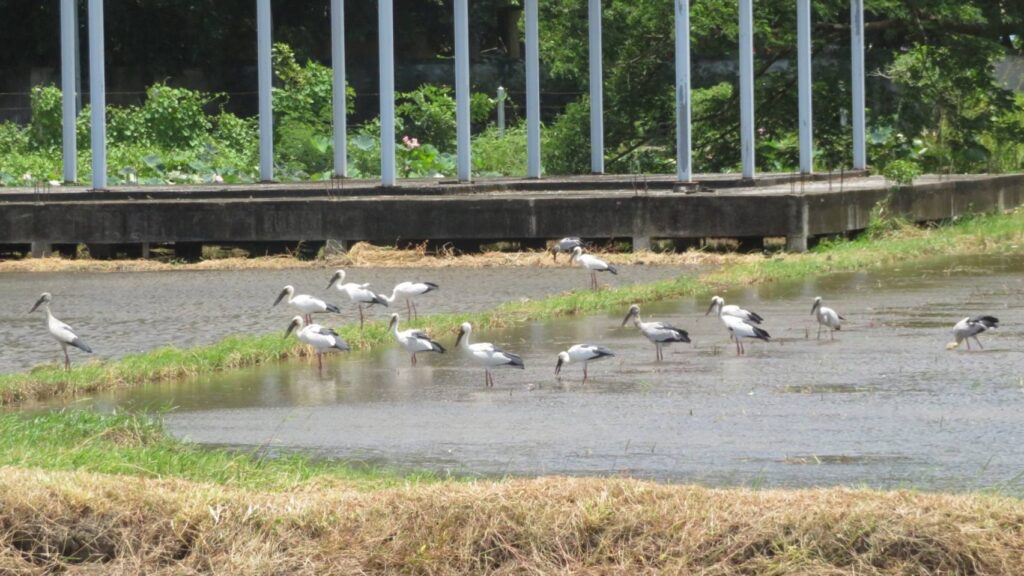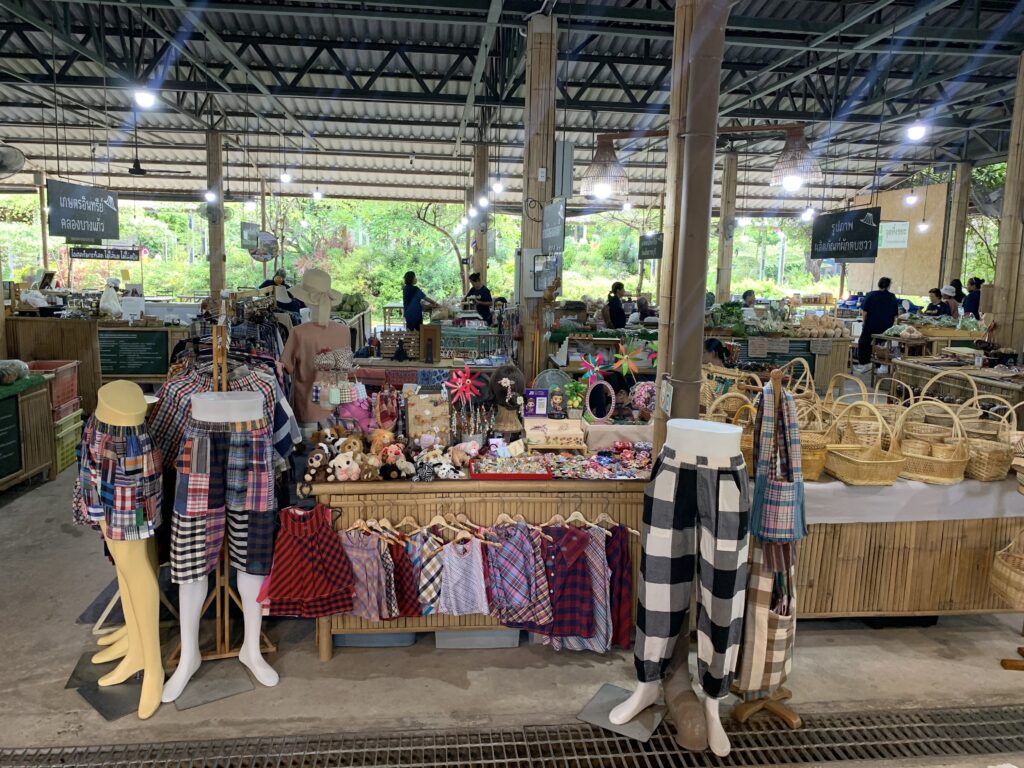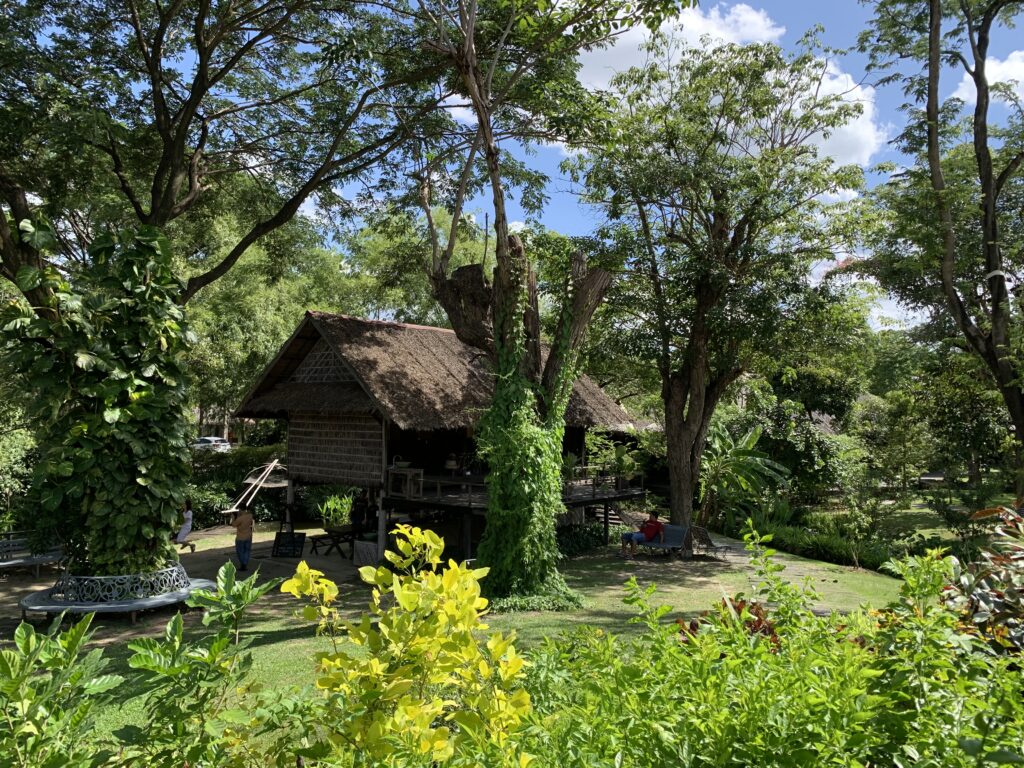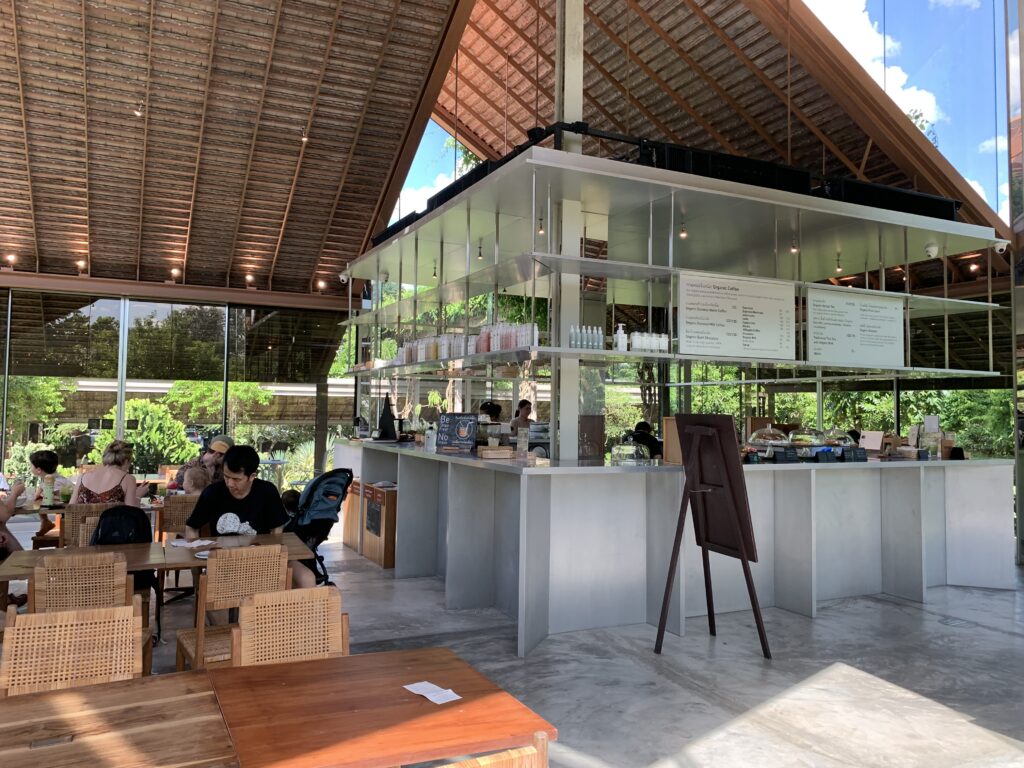Set among rivers, rugged mountains, and dense jungle in western Thailand near the border with Myanmar, Kanchanaburi offers far more than just the world-renowned Bridge over the River Kwai and the Death Railway. It’s a region rich in natural beauty and beautiful cultures, from the stunning Erawan Waterfalls to the hidden gem of Sangkhlaburi.
Most foreign tourists, especially the first-time visitors, would visit Kanchanaburi on a day trip from Bangkok. While this is doable, one day barely scratches the surface and most tours tend to focus solely on WWII-related sites, especially the Bridge over the River Kwai, Don Rak War Cemetery and another stop, probably Wat Tham Suea, one of the museums or one of the markets.
As Thailand’s third-largest province, covering 19,500 km² (after Nakhon Ratchasima and Chiang Mai), Kanchanaburi deserves more than a quick visit. Spending at least a few nights here lets you truly immerse in its history and explore its incredibly diverse landscapes.
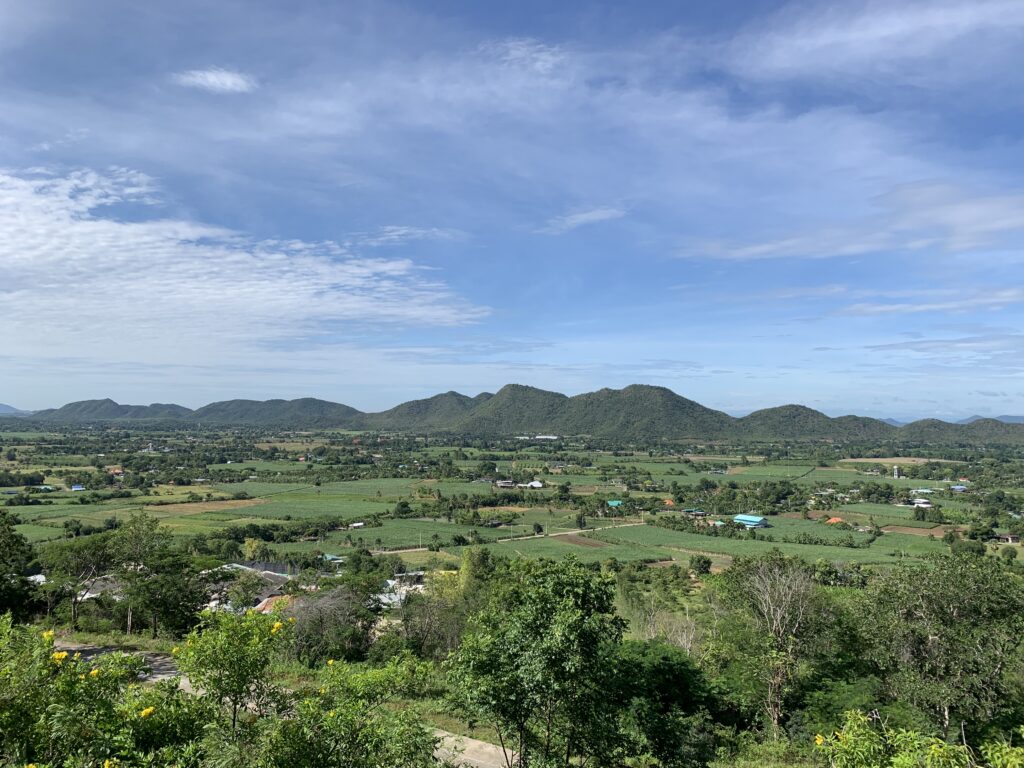
The province is best known for its wartime sites, including the Bridge over the River Kwai, the Death Railway, Hellfire Pass Interpretive Centre, and the war cemeteries. But its history goes beyond WWII. Don’t miss Prasat Mueang Singh Historical Park and if you have 1-2 more nights, the culturally rich town of Sangkhlaburi and the Three Pagodas Pass, one of the border gates to Myanmar.
Nature lovers will be spoiled for choice, with countless attractions such as Erawan Falls, Sai Yok Yai and Sai Yok Noi Waterfalls, Khao Laem National Park, Kwai Yai and Kwai Noi Rivers and more.
Here are my top picks for a mindful journey through this fascinating region:
WWII Related Attractions
Hellfire Pass Interpretive Centre
Approximately 80 km or 50 minutes by car from Kanchanaburi town, this poignant memorial honours the Allied POWs and Asian labourers who suffered and died during the construction of the Thai-Burma Railway in WWII. Established and managed by the Australian Government, the centre offers powerful insight into their harrowing experiences. The Hellfire Pass (Konyu Cutting) is approximately 500 metre walk from the Interpretive Centre building. This involves numerous steps and walking along the old railway bed, with a rocky and uneven surface underfoot. Suitable
footwear is highly recommended.
More information in English at Hellfire Pass – Anzac Portal and in Thai at ศูนย์ประวัติศาสตร์ช่องเขาขาด กาญจนบุรี

Highlights:
- Informative Exhibits: Artifacts, photographs, and survivor testimonies detail the brutal conditions endured during construction.
- Memorial Walking Trail: This self-guided trail runs through Hellfire Pass itself—cut through solid rock by hand—and lets you walk in the footsteps of history.
- Audio Guides: Firsthand survivor accounts bring the past vividly to life.
- ANZAC Day Dawn Service: Held each year on April 25, at 5 AM this deeply moving ceremony attracts visitors from around the world. On completion of the Dawn Service all guests are welcome to complimentary food and refreshments at a Gunfire Breakfast in front of the Interpretive Centre and see the exhibits. This is the only official ANZAC Day Dawn Service in Thailand.
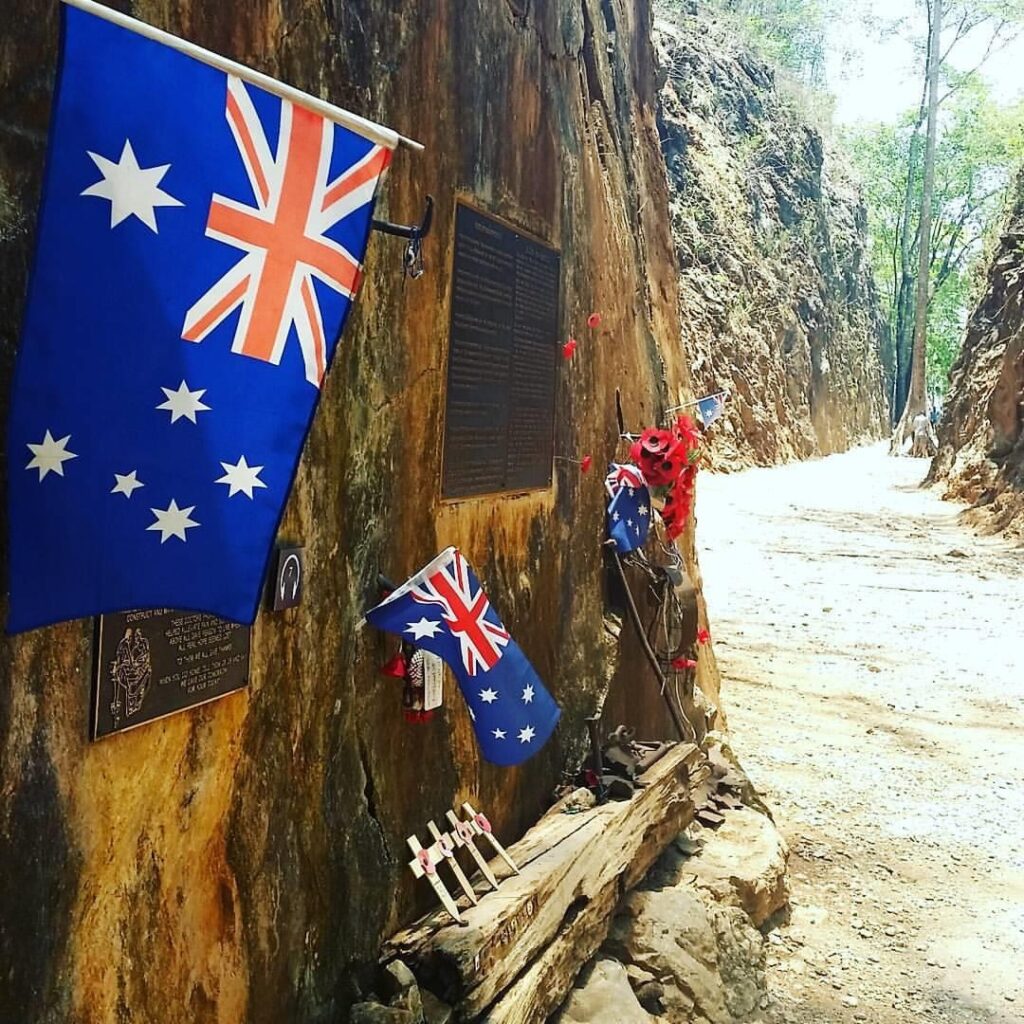
I’ve been fortunate to attend several ANZAC Day Dawn Services here during my time working for the Australian Embassy in Bangkok and the Tourism Authority of Thailand in Sydney. Speaking with former POWs—then in their late 90s—was an unforgettable experience I’ll always cherish.
Some foreigners attended the ceremony to pay their respects to those who died, either individually, with family members, or as part of groups such as veterans’ associations, commercial companies, and organisations dedicated to preserving the memory of prisoners of war. One such organisation is the Quiet Lions Tour, which has brought Australians to the railway each year since 1985. Founded by former POWs Bill Haskell and Keith Flanagan, its purpose is not commercial tourism but to honour and perpetuate the memory of prisoners of war by educating current and future generations about the Burma–Thailand Railway, with particular recognition of the role played by medical officers such as Lieutenant-Colonel E.E. “Weary” Dunlop.
Bridge Over the River Kwai, The Death Railway & Tham Krasae
The Bridge over the River Kwai is perhaps Kanchanaburi’s most iconic WWII site. It’s part of the infamous Thai-Burma Railway—also known as the Death Railway—constructed by the Japanese using forced labour to support their military campaign.
Between 1942 and 1943, over 100,000 lives were lost during the railway’s construction, including around 12,000 Allied POWs (mostly British, Australian, Dutch, and American) and over 80,000 Asian labourers. Most died from malnutrition, disease, overwork, and abuse.
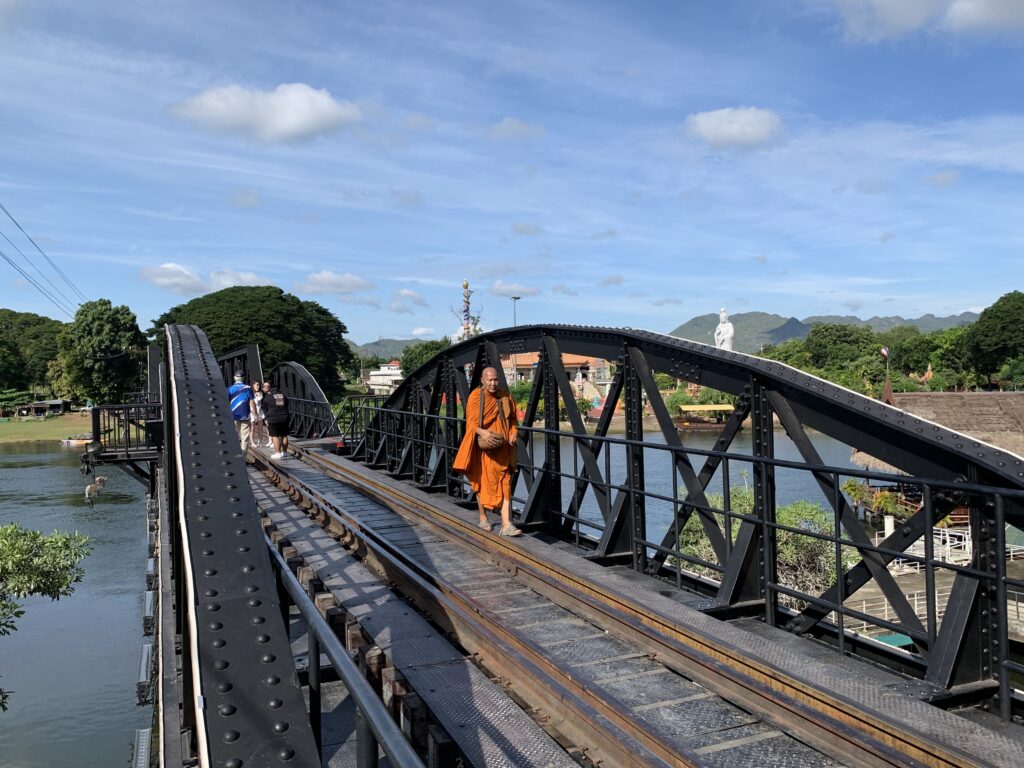
Tham Krasae (Krasae Cave), located in Sai Yok District, is another moving site. Here, a wooden trestle bridge (Wang Pho Viaduct) clings dramatically to a cliff above the Kwai Noi River. Built in just 17 days in 1943 under brutal conditions, it’s a striking testament to the human spirit. Adjacent to the viaduct is Krasae Cave, once used as a field hospital and now home to a serene Buddha image. Visitors can ride the still-operational train line, walk along the bridge, or pause for quiet reflection in the cave.
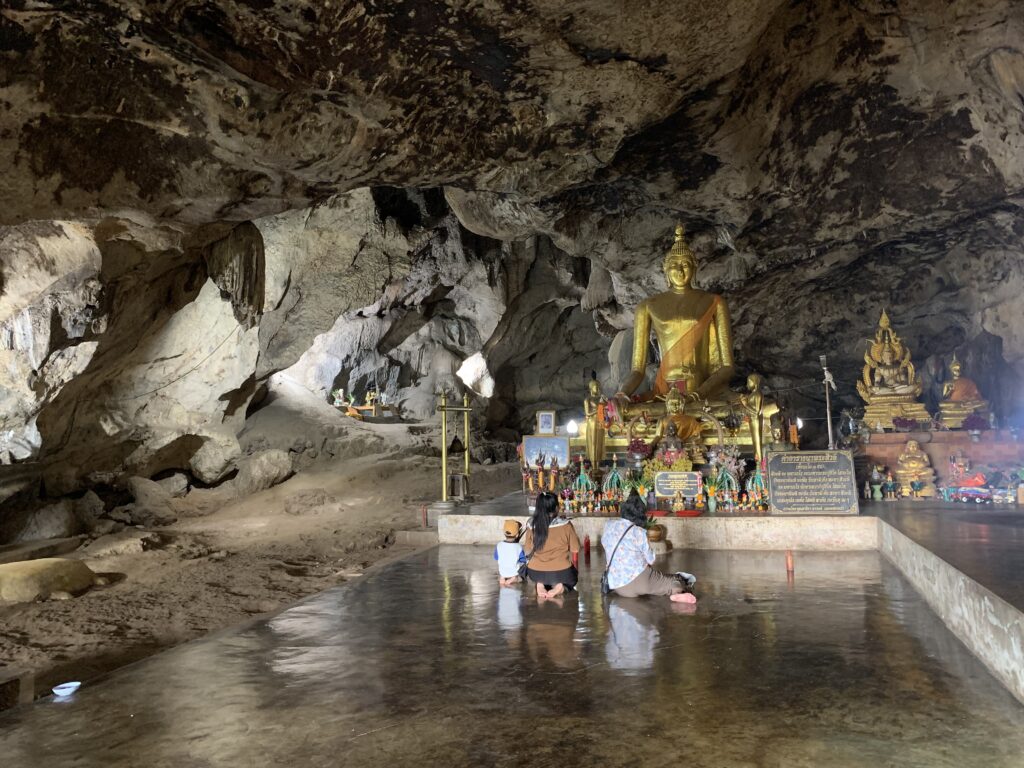
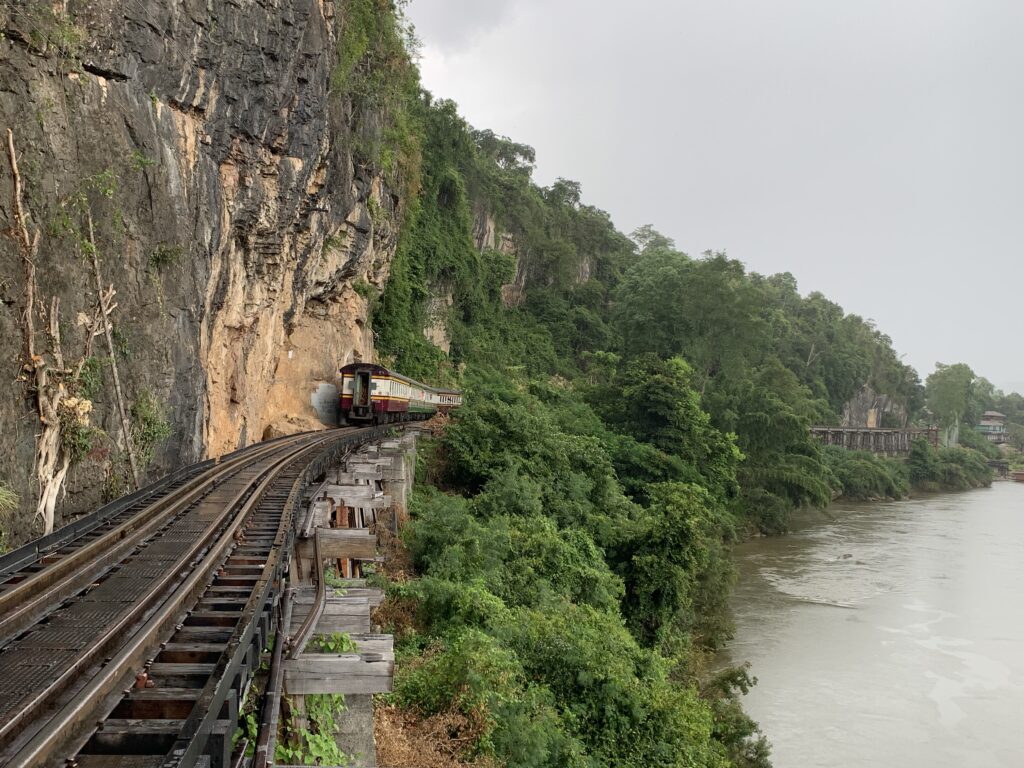

The War Cemeteries
Kanchanaburi is home to two major war cemeteries:
- Don Rak War Cemetery (central Kanchanaburi): The final resting place for 6,982 Allied POWs, primarily British, Australian, and Dutch soldiers. Right next to it lies the Death Railway Museum and Research Centre, a small museum with educational displays spotlighting the history of the Thailand-Burma railway. On April 25, in addition to the ANZAC Day Dawn Service at Hellfire Pass, at 11.00 AM there’s a Wreath Laying Service here.
- Chungkai War Cemetery (5 km from town): Formerly a POW camp and hospital, this cemetery contains 1,693 graves, including Indian soldiers.
While Don Rak is more frequently visited, Chungkai is equally significant and tends to be quieter, offering a more contemplative atmosphere.

Other Historical Attractions
Sangkhlaburi
Although farther afield, Sangkhlaburi is well worth the journey. Tucked against the Myanmar border in the far northwest of Kanchanaburi, it boasts a scenic landscape and a rich cultural mix. Spend at least one night here so you can wake early to witness the serene alms-giving ceremony on Mon Bridge—Thailand’s longest wooden bridge—linking the Thai and Mon communities. Stroll around town for breakfast, then take a long-tail boat tour on Vajiralongkorn Lake to see the beautiful sunken temple of Wat Samprasob. If time allows, visit Wat Wang Wiwekaram, the spiritual centre of the local Mon people.
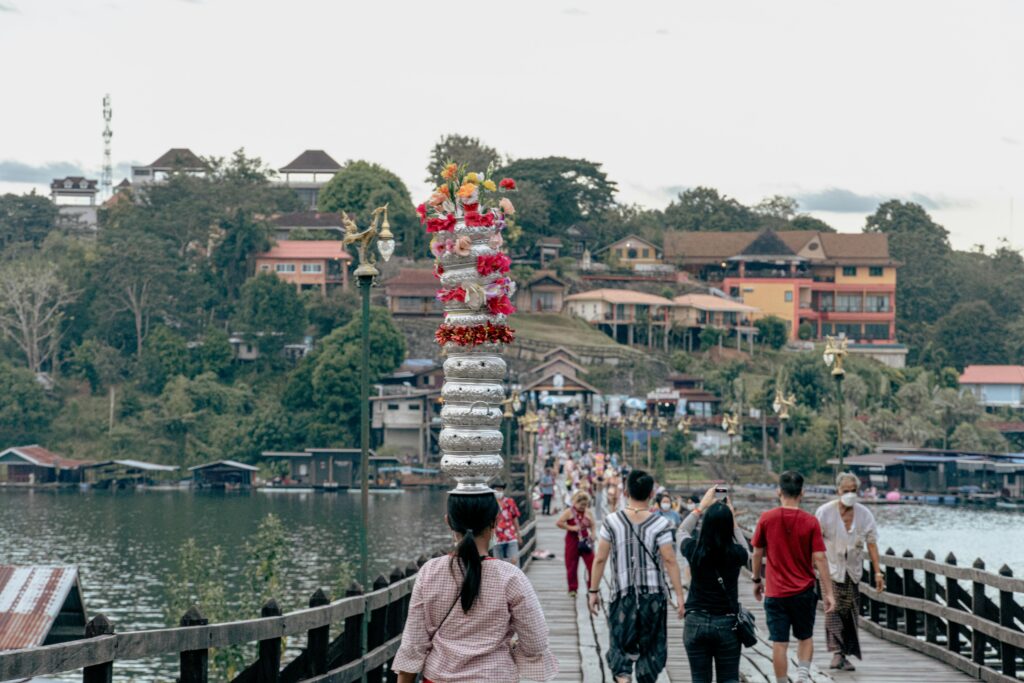

Prasat Mueang Singh Historical Park
Dating from the 12th–14th centuries, this archaeological park showcases the westernmost extent of the ancient Khmer Empire. Its well-preserved laterite temples reflect Mahayana Buddhist influences and are surrounded by moats and earth walls. Set along the Kwai Noi River, it’s a peaceful place to connect with the region’s pre-modern past.
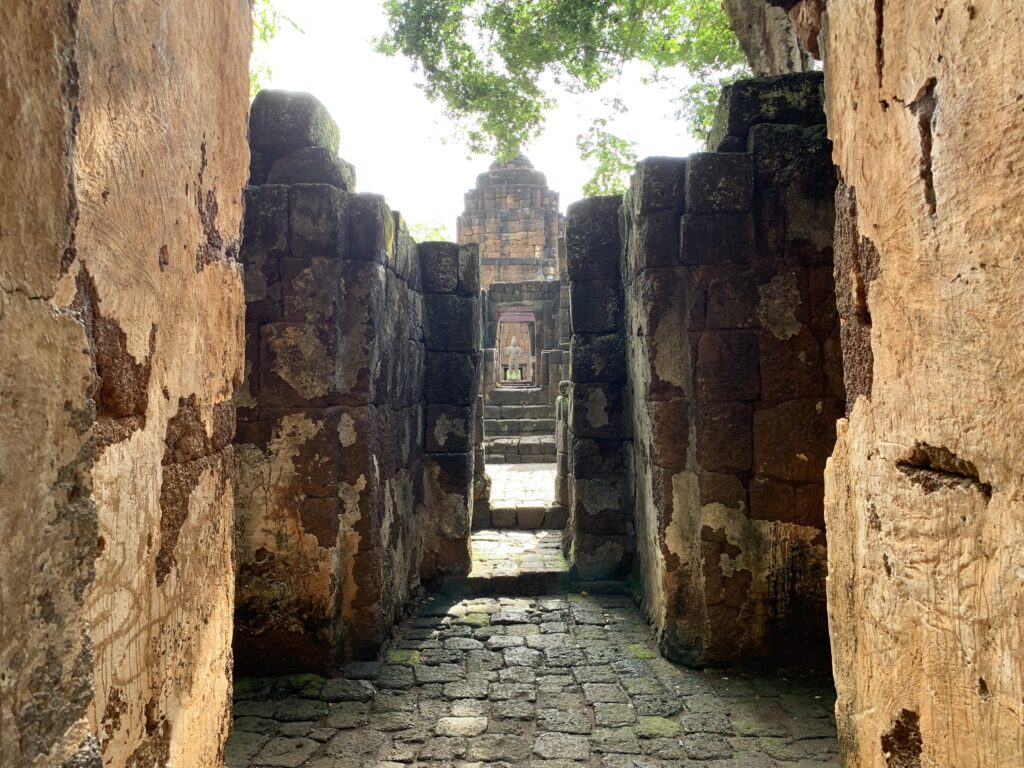
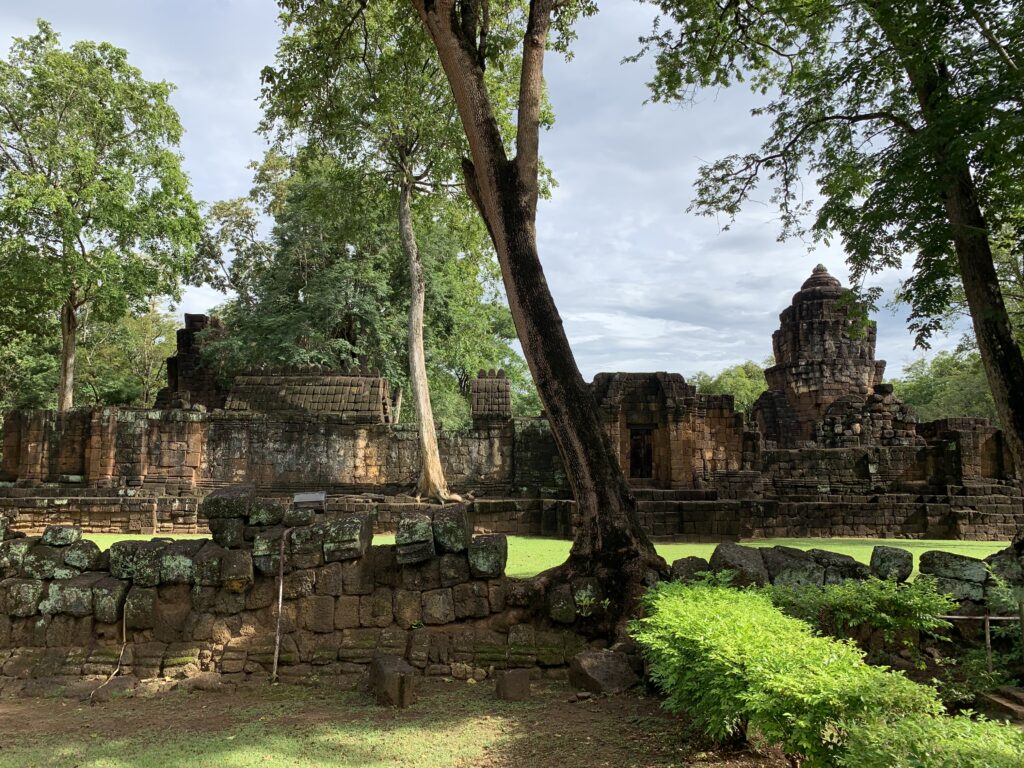
Cultural Attractions
Ban Kao National Museum
Tucked away in the peaceful countryside of Kanchanaburi, Ban Kao National Museum offers a fascinating glimpse into Thailand’s prehistoric past. The museum was built near an archaeological site where stone tools, pottery, ornaments, and even ancient human remains dating back more than 4,000 years were discovered. Walking through the exhibits, you can imagine how early communities once farmed, crafted, and lived along the riverbanks here. It’s a small but meaningful stop that combines history with a serene setting, perfect for travellers looking to go beyond the war stories and explore another layer of Kanchanaburi’s heritage.
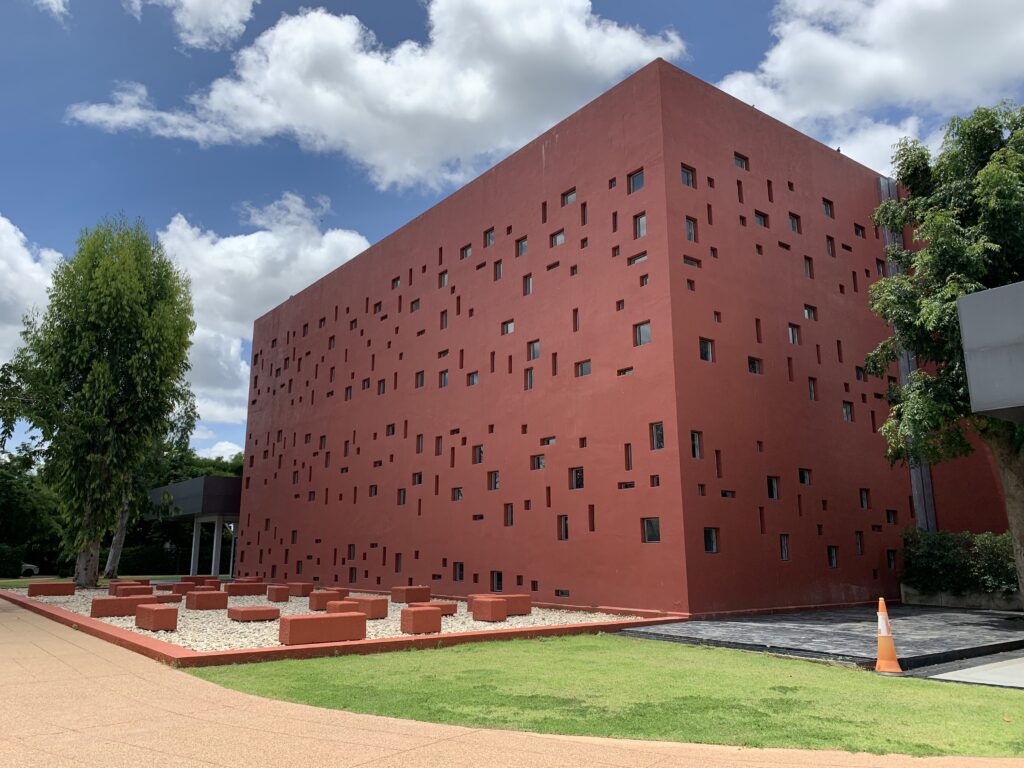
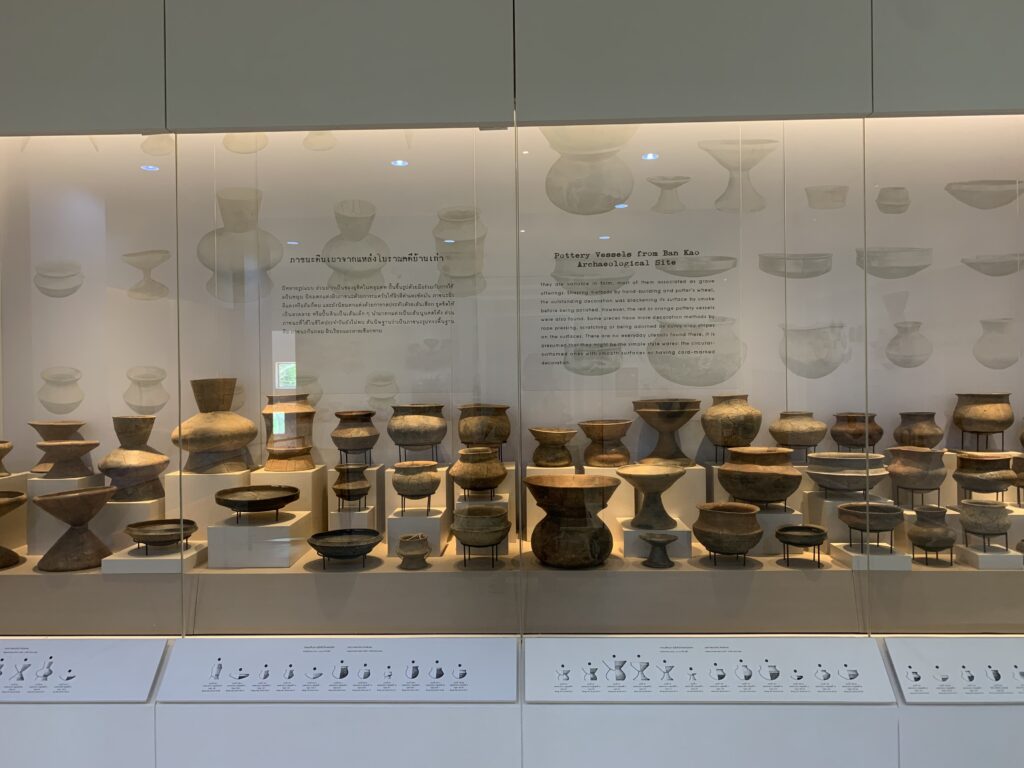
Tip: Ban Kao National Museum is located on the same highway as Prasat Muang Singh Historical Park – about 10 – minute drive before reaching the park if you’re coming from Kanchanaburi town. If you’re also planning to visit Krasae Cave, you’ll pass by both attractions along the way, making it easy to combine them into one trip. On my visit, I spent about 1.5 hours exploring the museum, stopped for lunch at a restaurant next to Krasae Cave before visiting the cave itself, then visited Prasat Muang Singh Historical Park for another 1.5 hours on my way back to town. It made for a full but relaxed day out, ending back in town just in time for sunset and a stroll through Song Kwai Walking Street.
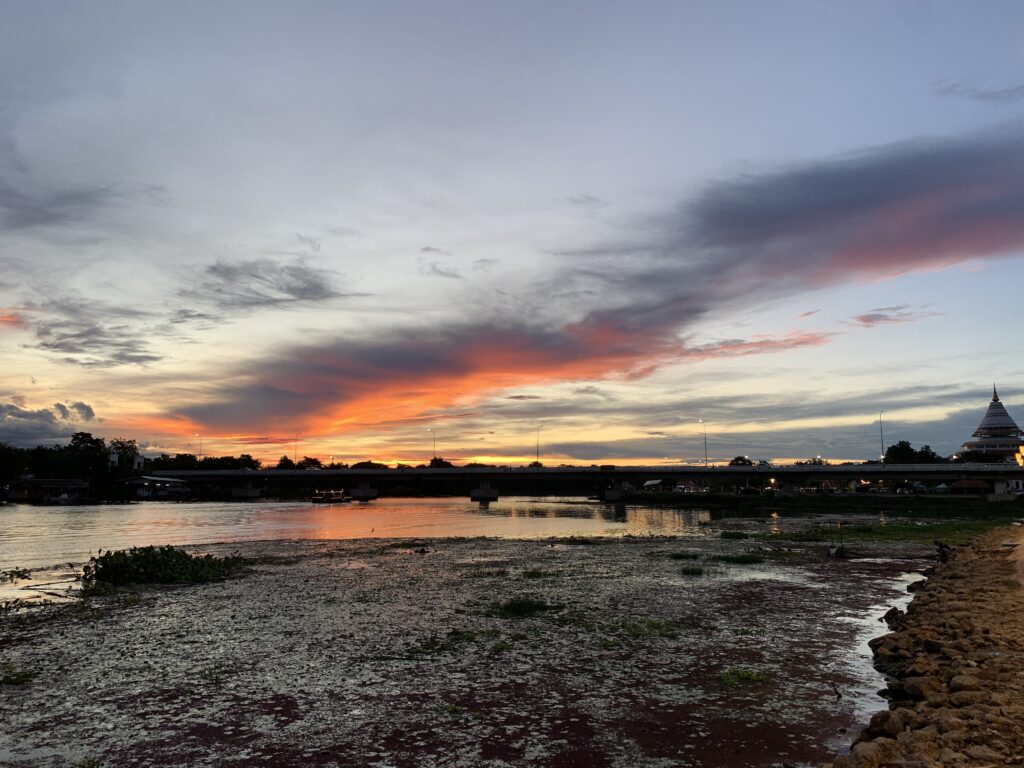
Wat Tham Seua
Just outside Kanchanaburi town, Wat Tham Seua (Tiger Cave Temple) rewards visitors with panoramic views from its mountaintop location. While in the area, stop by Meena Café or Rakkanna Noodle & Cafe for delicious meals and sweeping views of rice paddies and the temple in the distance.
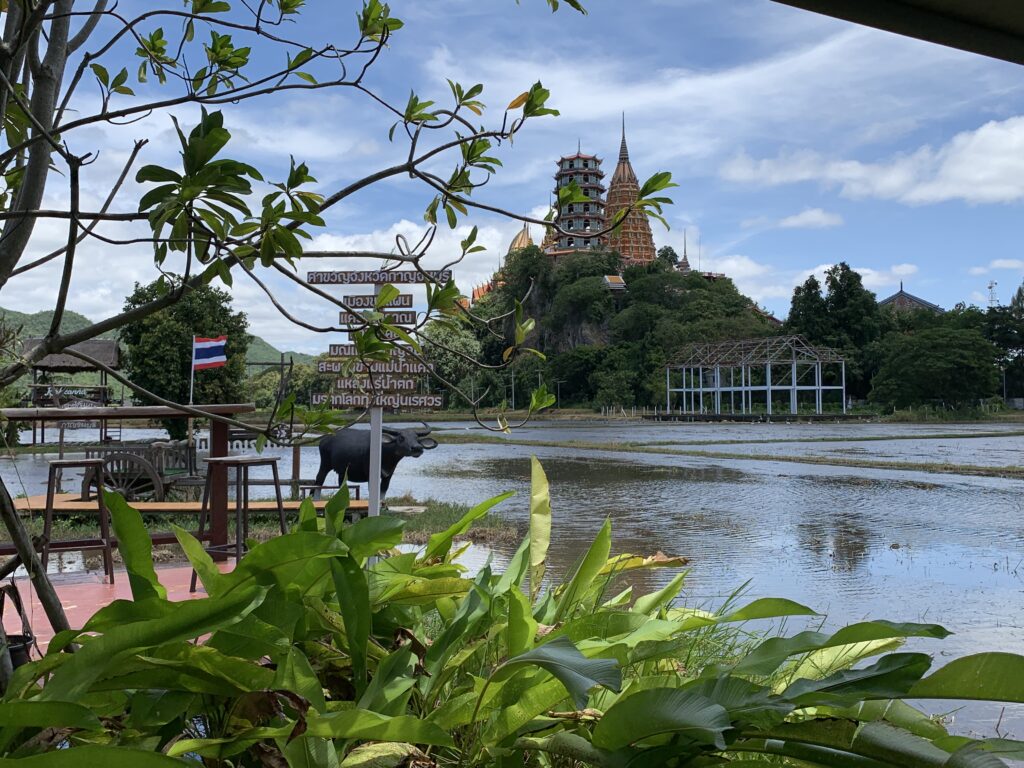
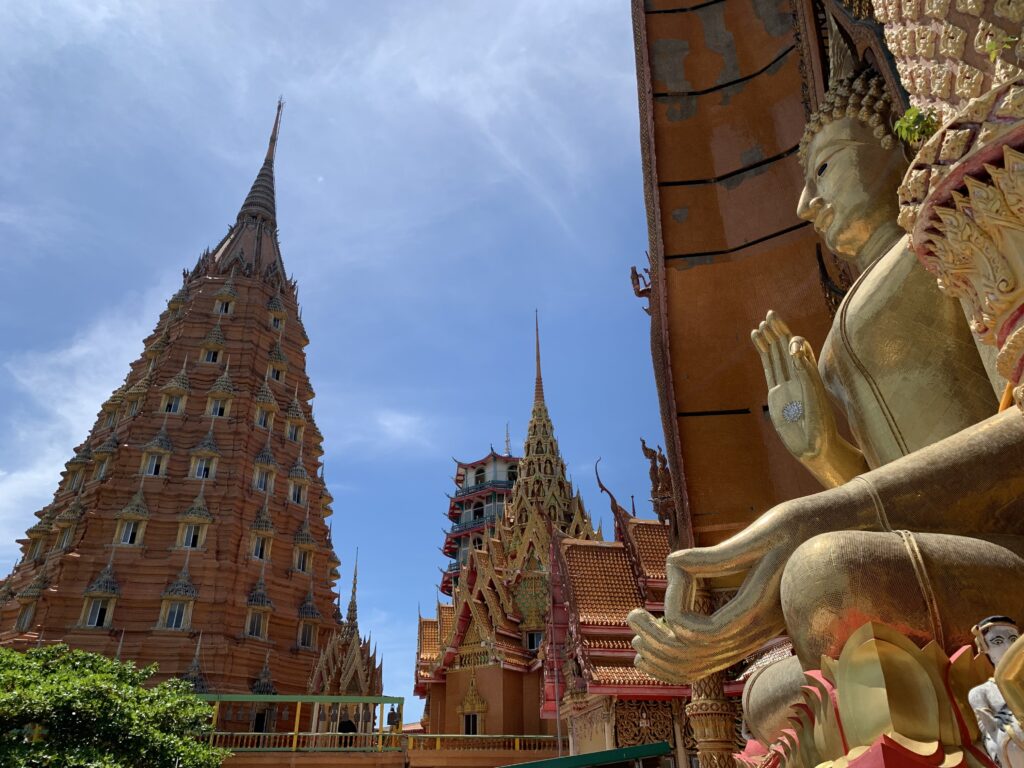
Natural Attractions
Erawan Waterfall
Often ranked among Thailand’s most beautiful waterfalls, Erawan Falls features seven tiers of pools perfect for a refreshing dip. Located in Erawan National Park, about 65 km from Kanchanaburi town, it’s one of the region’s most popular natural attractions.
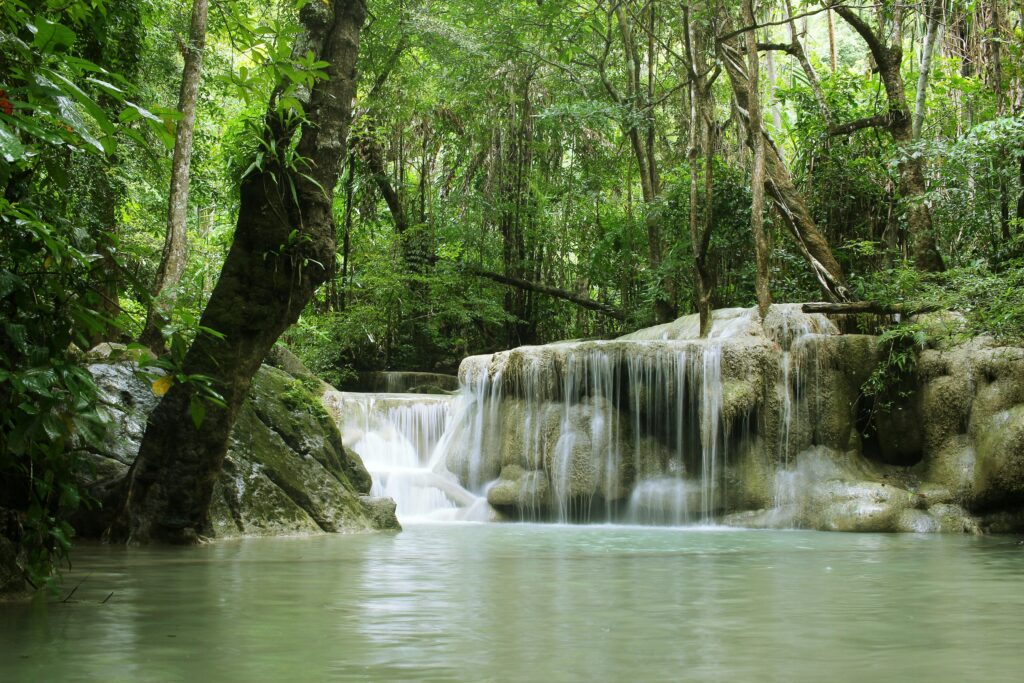
Sai Yok National Park
A nature lover’s paradise with forest trails, caves, and waterfalls. Float down the Kwai Noi River by bamboo raft or kayak, and spot remnants of the Death Railway hidden among the trees.
Thong Pha Phum National Park & Surroundings
This remote park is ideal for hiking, especially the Khao Chang Phuak trail. Nearby, Khao Laem National Park offers peaceful lakeside stays, while Khuean Srinagarindra (Srinakarin Dam) National Park is home to the magnificent Huai Mae Khamin Waterfall, a less-crowded alternative to Erawan.


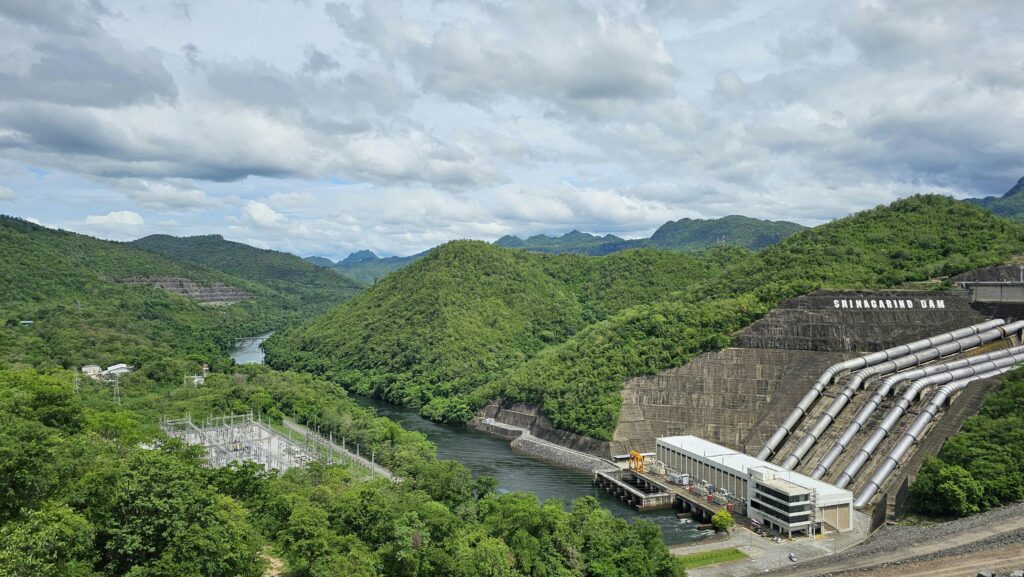
The Rivers of Kanchanaburi
The Kwai Yai and Kwai Noi rivers are not only historically significant but also breathtakingly scenic. These rivers eventually merge into the Mae Klong River and are lined with floating resorts, lush jungle, and forested hills.
Popular community/ eco-tourism activities include:
- Kayaking and canoeing through peaceful stretches of river
- Bamboo rafting for a slow, immersive experience
- Stand Up Paddleboarding along the river
- Jungle trekking to waterfalls, caves, and old railway sites
- Wildlife watching, including gibbons and exotic birds
- Staying in floating eco-resorts, many of which use sustainable practices and offer a deep connection to nature
- Shopping local at Song Kwai Walking Street, an evening market with most stalls selling ready to eat food, and watching sunset over the river while enjoying your food

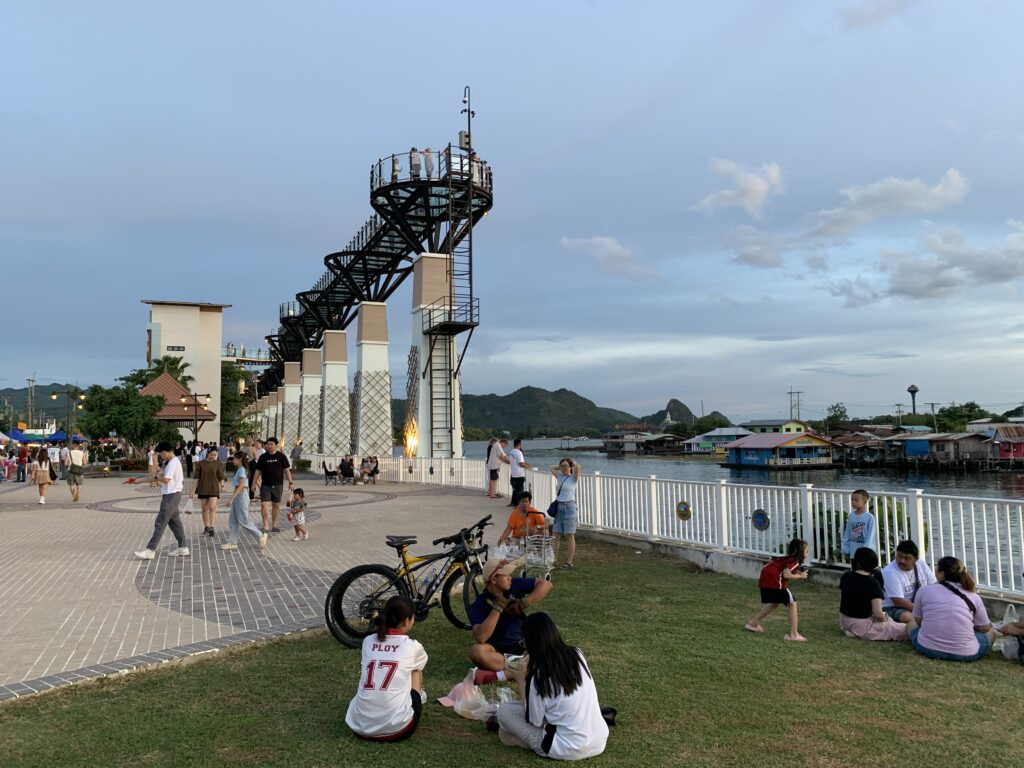
Whether you’re interested in history, culture, or natural wonders, taking your time to explore Kanchanaburi will leave you with memories as profound as its past.
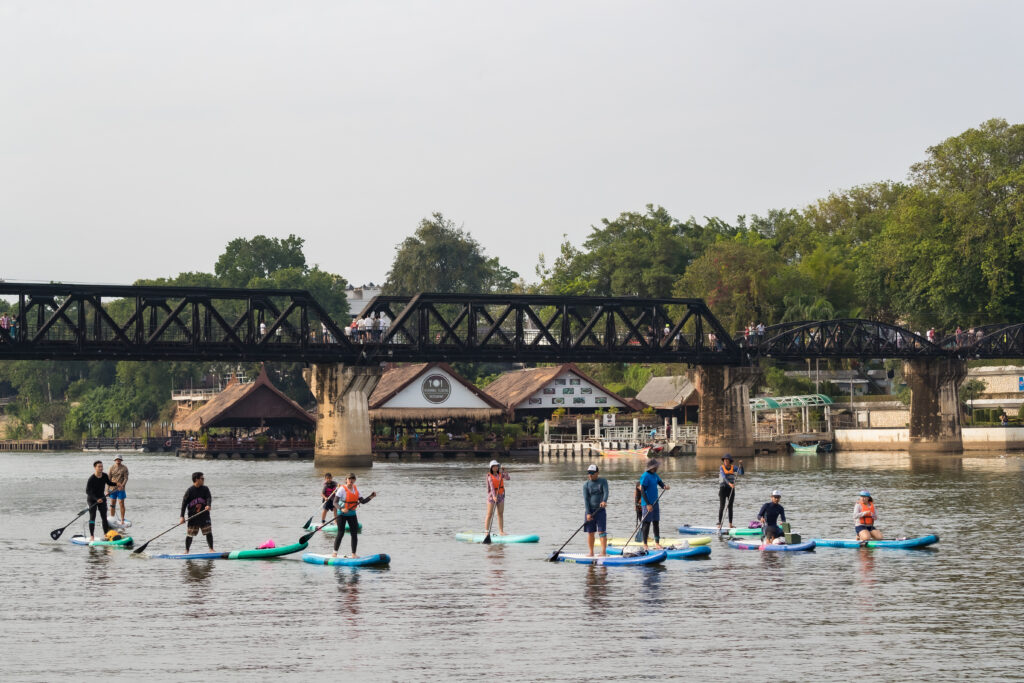
In December 2023, while I was still working for the Tourism Authority of Thailand in Sydney, I created a program for Getaway TV to film in Kanchanaburi. I chose Paddle and More Travel to take care of the group not only because they are local experts, but also because they give back to the community and the environment. A good example of their commitment to responsible and sustainable tourism practices is their monthly cleanup initiative—on the Wednesday of the second week of each month, they gather to clean the river and surrounding areas.
You can watch the Kanchanaburi episode of Getaway TV here.
Getting from Bangkok to Kanchanaburi is easy and offers two popular options—by train or by car. The train ride from Thonburi Station takes around 3 hours, offering a laid-back journey through rice fields and small towns before arriving at the historic Kanchanaburi station. It’s scenic and affordable, but trains run on fixed schedules and can be slower than driving. By car, the trip takes from 1.5 – 2.5 hours depending on the routes, giving you the freedom to stop along the way at interesting spots like Nakhon Pathom with its giant Phra Pathom Chedi and Sookjai Farmer’s Weekend Market and Patom Cafe at Suan Sampran, or the riverside town of Ratchaburi known for its pottery and markets. Driving is faster and more flexible, especially if you want to explore off-the-beaten-path attractions, but traffic can be heavy, and you’ll need to be comfortable navigating Thai roads.
